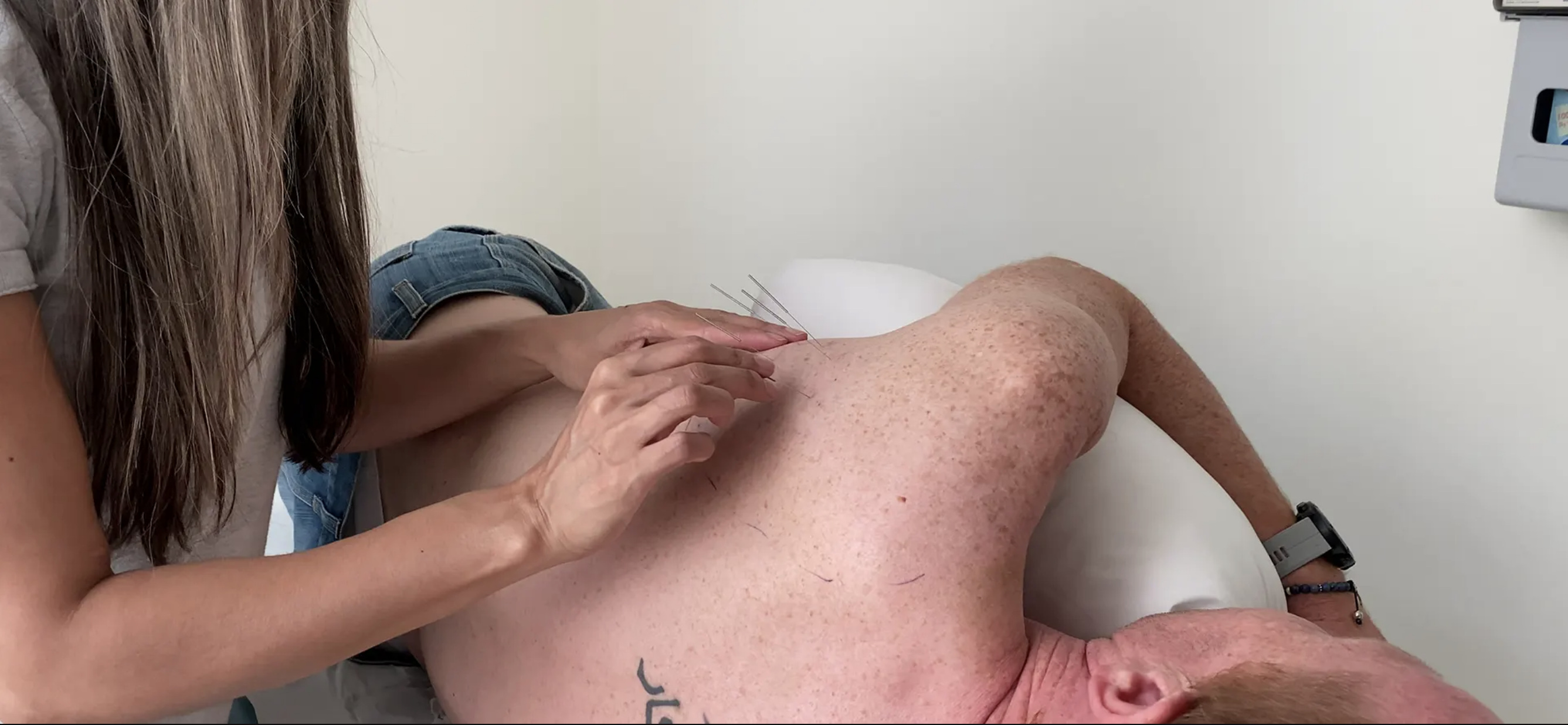A long day at work sitting at a desk reading, writing, and typing and not necessarily with bad posture, may often leave us susceptible to TPs. Some of the most frequently occurring locations of knots are in the upper traps of the shoulder between your neck and shoulder tip, as well as between your shoulder blade and spine in your upper back. Rest, medication and exercise often help relieve the symptoms but if left unmanaged for long enough the pain may become persistent and worsen over time.
TPs may often send pain signals higher or lower in the body leading you to believe that another area is actually the problem – known as “referred pain”. TPs do not occur in isolation and over time the cumulative build-up of these points regularly leads to other larger biomechanical problems that cause pain.

Dry Needling
Also known as Myofascial Dry Needling, is a modern technique whereby thin filamentous needles are used to provide pain relief by releasing the tension in TPs found within muscle. A thin needle is inserted through the surface of the skin to the exact location of the trigger point within the muscle involved. A physiological reaction occurs and is sometimes seen or felt as a twitch as the tension within the TPs starts to ease.
How deep do the needles go and for how long?
This depends entirely on the anatomical location of the muscle in question. Our body has layers of muscles that are deep and some that are more superficial. A deeper muscle requires a slightly longer needle than a more superficial one.
What will I feel and is it painful?
The first and most obvious sensation felt will be a pin-prick-like sensation as the needle gently moves through the skin. The second sensation may resemble a dull ache that sometimes mimics the symptom-pain of your condition. Some patients feel little to no pain at all! Most feel a muscle ache after treatment that resembles a very intense workout at the gym. The soreness does subside within the day and by the next day results start to be more apparent.
Is it the same as acupuncture?
No, the needles used in acupuncture and dry needling are the same but the application and principles of treatment are different. Acupuncture is considered to be based on ancient eastern medicine and largely focuses on energy flow of the body and its energy points called meridians. Dry Needling on the other hand is more current Western medicine based on length-tension and biomechanics of joints and muscles.
What conditions can Dry Needling help me with?
Some of the conditions that can be treated with dry needling include:
- Migraines & tension-type headaches
- Golfers & tennis elbow
- Shoulder impingement
- Sciatica & lower back pain
- Muscle stiffness & strain
- Tendonitis
- Postural pain syndromes
- Post-surgery pain
- Upper back pain & disc pathology
- Carpal tunnel syndrome
- Whiplash and neck pain
- Shin splints & knee pain
Dry Needling has showed to be a safe and effective modern method of treating musculoskeletal disorders. With over 10 years of needling experience we have yielded excellent results with patients quickly and efficiently. For more information on dry needling and how it can help you feel free to contact one of our friendly professionals here at PhysioFit Dubai.
